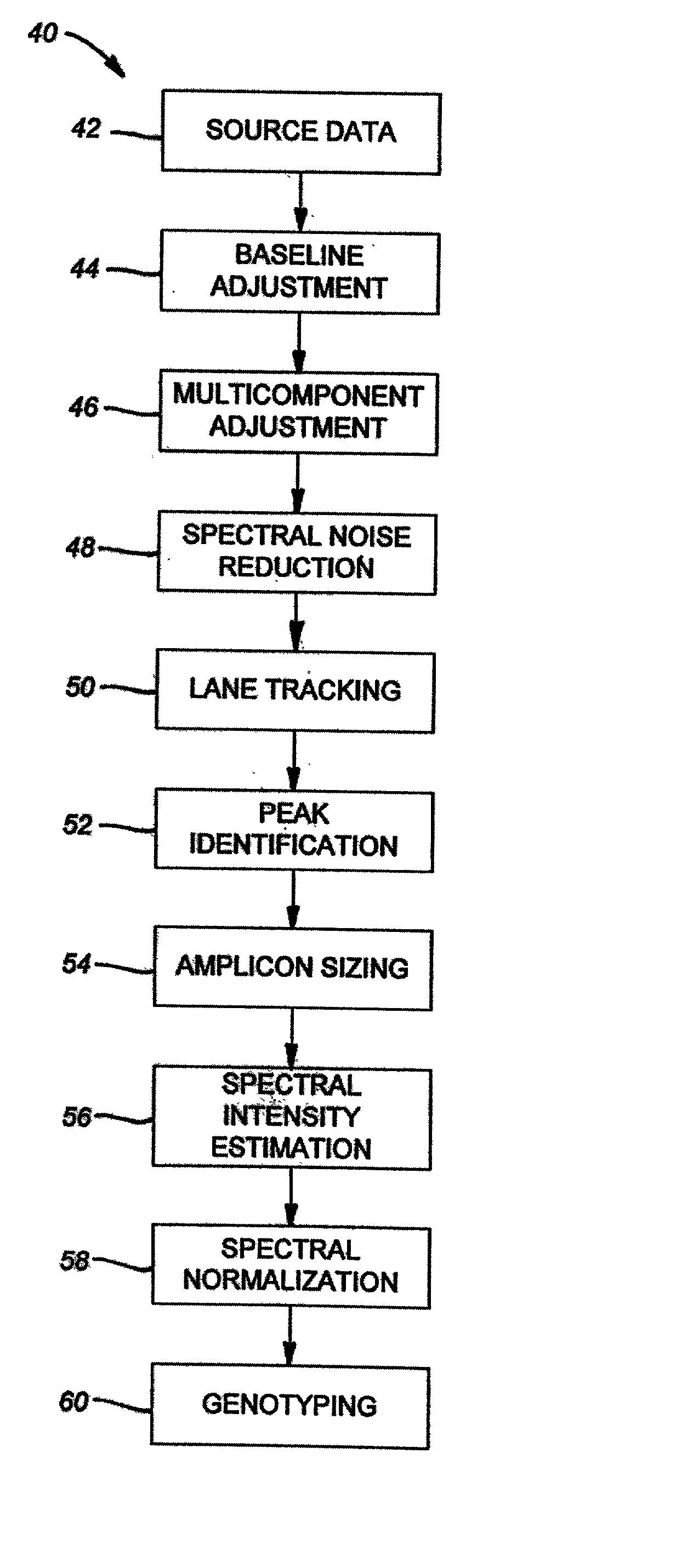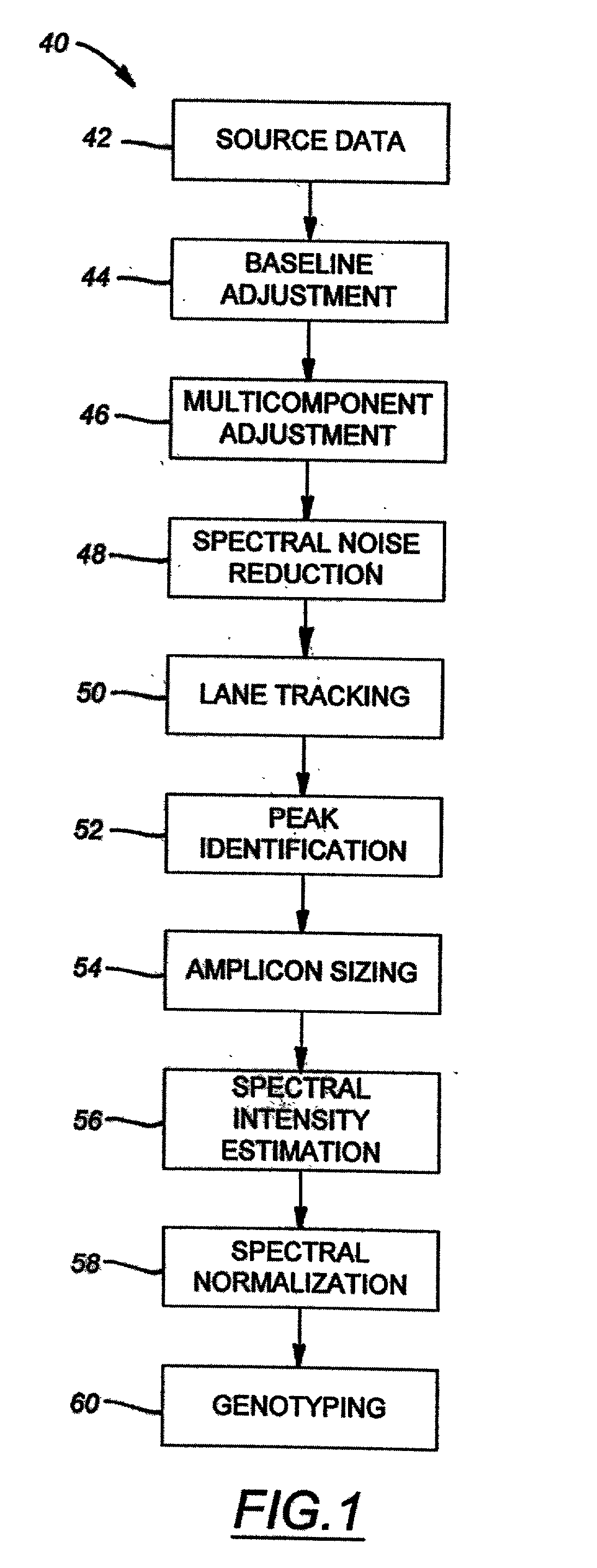Method of genotyping by determination of allele copy number
a technology genotyping method, which is applied in the field of genotyping by determination of allele copy number, can solve the problems of not being able to detect variation below the generic level, no single technique is universally applicable to all types of genetic analysis, and few, if any, exhibit even a majority of the aforementioned criteria of a genetic marker
- Summary
- Abstract
- Description
- Claims
- Application Information
AI Technical Summary
Benefits of technology
Problems solved by technology
Method used
Image
Examples
examples
[0444] The following Examples are provided for illustrative purposes only. The Examples are included herein solely to aid in a more complete understanding of the presently described invention. The Examples do not limit the scope of the invention described or claimed herein in any fashion.
[0445] Sample validation. To validate the FAFLP codominant scoring procedure, a system where precise knowledge of parental and offspring genotypes was used. Two highly inbred lines of domestic chicken (Gallus gallus), a single Rhode-Island Red male and 8 Ancona females were crossed. A total of 48 F1 individuals were obtained from six hens. Nine autosomal and two sex-linked loci were used to validate the codominant fAFLP procedure. DNA samples of parents P:M3966 and P:F343 and 10 F1 individuals (Fl:M / F7163-7173) were randomized blindly with replacement and processed using the fAFLP genotyping procedure, such as that preferably described above. The results of the genotyping procedure are graphically i...
PUM
| Property | Measurement | Unit |
|---|---|---|
| temperature | aaaaa | aaaaa |
| temperature | aaaaa | aaaaa |
| temperature | aaaaa | aaaaa |
Abstract
Description
Claims
Application Information
 Login to View More
Login to View More - R&D
- Intellectual Property
- Life Sciences
- Materials
- Tech Scout
- Unparalleled Data Quality
- Higher Quality Content
- 60% Fewer Hallucinations
Browse by: Latest US Patents, China's latest patents, Technical Efficacy Thesaurus, Application Domain, Technology Topic, Popular Technical Reports.
© 2025 PatSnap. All rights reserved.Legal|Privacy policy|Modern Slavery Act Transparency Statement|Sitemap|About US| Contact US: help@patsnap.com



